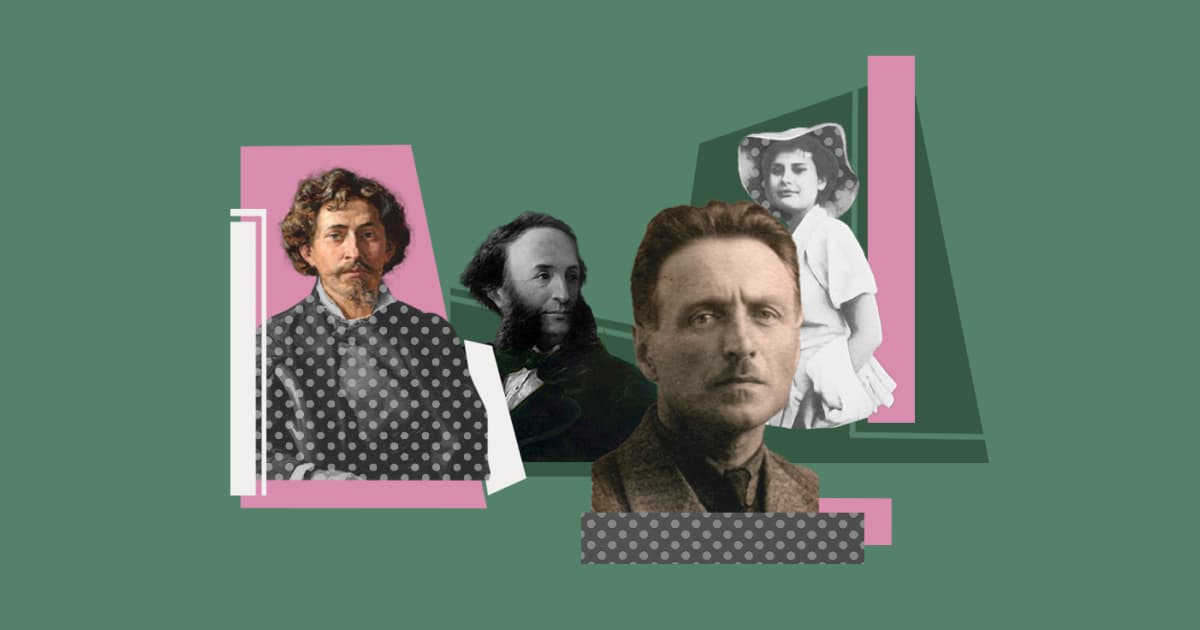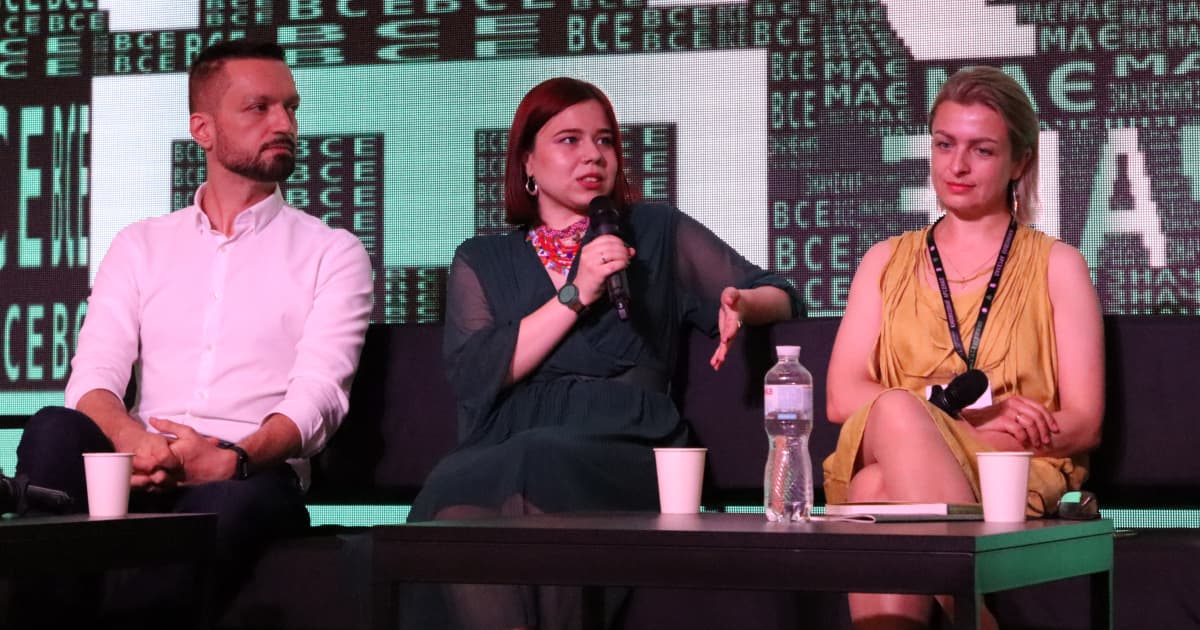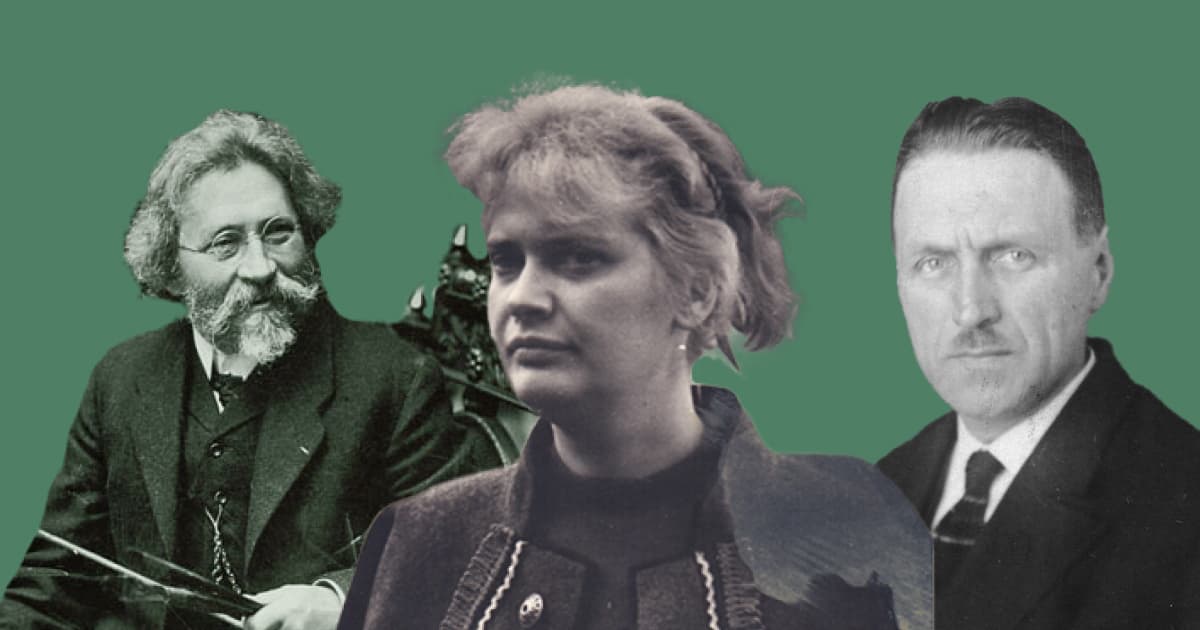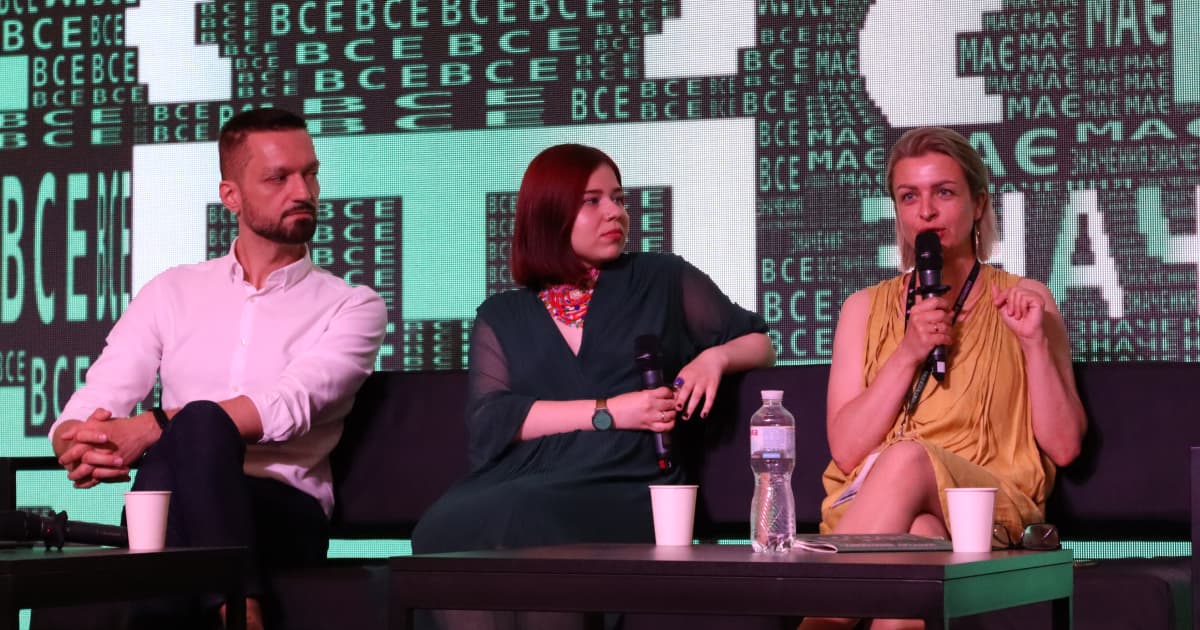Cultural Diplomacy. How does Ukraine return the names of its artists abroad?

In February 2023, the Metropolitan Museum of Art in New York began recognising artists Ivan Aivazovskyi and Illia Repin as Ukrainians. Previously, they had been classified as Russian artists. But is this an example of effective cultural diplomacy?
"When someone abroad hears about Ukraine and the war, they want to learn more about the country. They want to see the culture, learn the background of the people and understand why the war is going on. Many people visit museums where they don't see Ukraine. It's not because our art is bad or irrelevant but because Russia appropriates these artists," says art historian Oksana Semenik.
The 11th International Book Arsenal Festival discussed how to tackle improper attributions of Ukrainian artists in world museums, what it means, and how to spread information about Ukrainian artists.
Ukrainian artists are classified as belonging to Russia
In the American Zimmerli Art Museum, more than 70 artists out of 900 signed as Russians turned out to be Ukrainians, said art historian Oksana Semenik, who had an internship there.
The paintings for the Zimmerli Art Museum's collections were bought in Russia in the 60s and 70s, so the museum staff signed the artists as Russian artists. According to Semenik, many paintings came to world museums from Russian collectors or museums.
Oksana Semenik emphasises that it is important to constantly communicate with global cultural institutions about incorrect signatures to paintings.
They need to be explained that this is not a rewriting of history, but a correction of their mistakes and the fact that they followed Russian narratives,
says Semenik.
In 2021, at an exhibition in Helsinki, Finland, dedicated to the Ukrainian artist Illia Repin, he was presented as a Russian, said Natalia Teramae, a Ukrainian researcher, journalist and member of the Ukrainian Association in Finland. Ukraine was mentioned only as the artist's place of birth.
The culture surrounding a creative person from childhood greatly influences the formation of any creative personality. (...) But all over the world, it is customary to identify artists not by their nationality but by their school. Repin graduated from the St. Petersburg Academy of Arts in Russia,
Nataliia Aheieva, a researcher at the Kyiv Art Gallery's research department, told Ukrinform.
In 2016, the Helsinki Ateneum Art Museum presented Repin's works in the exhibition "Russian Masters — from Aivazovskyi to Repin", when both were Ukrainians.
The lack of knowledge of Ukrainian art
A painting by Ukrainian artist Vasyl Yermilov was hanging upside down in New York's MoMA (Museum of Modern Art – ed.), said Volodymyr Sheiko, director general of the Ukrainian Institute.
It's an abstract work, so not everyone could notice something was wrong,
says Sheiko.
For more than five years, the creative director of the Ukrainian Institute, Tetiana Filevska, had been asking the museum to hang the painting. Her requests were always answered: "We will consider your request," but nothing happened.
No one took into account the Ukrainian voice and position. Only when the full-scale invasion began was a few days enough for Yermilov to be hung properly,
says the director general of the Ukrainian Institute.
Sheiko believes cultural diplomacy has a significant impact, so it must be used and developed.
People have started to hear us, and this is important. It is an opportunity to spread our messages, being uncomfortable and provocative, disagreeing with what the world offers us,
Sheiko says.
Separation from Russian culture
The challenge for Ukrainian cultural diplomacy is that we are not just promoting our culture but are forced to respond to Russian narratives spreading for decades, which is why the world does not know Ukrainian cultural figures.

One of the characteristics of wartime cultural diplomacy is the separation from Russia, says Sheiko.
The state of decolonialism that we are approaching is the possibility and ability to speak about ourselves without anyone else's opinion. We must speak about ourselves in our voice without comparing ourselves to others. In our case, with Russian culture,
he says.
Russia has been spreading the word that its culture is rich in talented artists whose work is recognised worldwide. Among the artists it named were Illia Repin, Kazymyr Malevych, and Ivan Aivazovskyi, who were Ukrainians.
This 'great Russian culture' is formed from what was appropriated or stolen from other nations. Without Repin, Aivazovskyi, or Malevych, their entire culture would scatter,
Oksana Semenik notes.
According to her, many paintings came to world museums from Russian collectors, so they were often signed as Russian. However, these works could have been purchased or taken from Ukrainian museums.
In addition, Russian departments of Slavic Studies are active in European and American institutions. Their research often covers not only Russia but also the language and culture of Ukraine, Belarus, and other post-Soviet countries.
Instead, Ukrainian artists who the Russian Empire and the USSR could not appropriate were repressed and killed.
Destruction of Ukrainian artists
Soviet persecution and murder affected the development of Ukrainian culture of the last century, as the creative process was effectively interrupted and slowed down its growth.
As a result, Ukrainian culture suffered catastrophic losses when many people were killed in their prime long before they could create masterpieces. As a result, our culture is poorly known worldwide,
says historian and author of the History Without Myths channel Vladlen Maraiev.
For example, Mykhailo Boichuk, a Ukrainian artist, monumental painter, and founder of Boychukism (a synthesis of Ukrainian folklore fine arts and church art of Byzantium, the Proto-Renaissance, and Ukraine), was shot dead by representatives of the People's Commissariat of Internal Affairs of the USSR along with his students Ivan Padalka, Vasyl Sedliar, and Ivan Lypkivskyi in 1937.
Boichuk was one of the ideological leaders of the Association of Revolutionary Art of Ukraine, which rejected naturalism and sought the national identity of Ukrainian art. From the early 1930s, the Soviet government began to impose a single artistic method for all - socialist realism. The artists did not support this and were accused of belonging to a "counter-revolutionary national fascist organisation".
In 1970, an artist and an activist of the Sixties movement, Alla Horska, was found dead with numerous head injuries. The woman was constantly summoned to the KGB for warnings. She supported imprisoned members of the Ukrainian intelligentsia: she wrote protests after the trial of Viacheslav Chornovil in Lviv, and together with Lina Kostenko and other dissidents, she sent open letters to the newspaper Literaturna Ukraina because of the slanderous accusations against the writers.

The destruction of Ukrainian artists and their works did not end with the last century. On July 1, 2023, Ukrainian writer Viktoriia Amelina died from injuries sustained during a Russian missile attack on Kramatorsk on June 27.
It was she who found children's writer Volodymyr Vakulenko,ʼs diary which he had buried. Later, he was killed by the Russians. Vakulenko was found in a mass grave after the de-occupation of the Izium region, with two bullets in his body.
A sculptor, ceramist from Poltava and teacher at the Poltava Children's Art School, Sviatoslav Pashynskyi, was killed by a Russian bullet. In the battle for Kharkiv, Russians killed artist and volunteer Artem Azarov.
The artist Oleksandr Tarasenko died of a severe shrapnel wound in the battle near Okhtyrka. He was an associate professor of fine arts at Poltava University of Civil Engineering.
Due to the explosion of the Kakhovka HPP in the temporarily occupied Oleshky in the Kherson region, the house-museum of Ukrainian artist and representative of outsider art Polina Raiko was submerged. Only 30-40% of the frescoes remained - the flood destroyed the rest. Raiko's work is on par with the art of Ukrainian artists such as Mariia Prymachenko and Kateryna Bilokur.
Promoting Ukrainian culture abroad
Oksana Semenik has been running the Ukrainian Art History Twitter page for about a year, a project about Ukrainian culture for foreigners.
Twitter is a social network where foreigners read news and learn something new. I realised that there was nothing about Ukrainian art in English. So I started telling our story,
says Semenik.
According to her, it is important to explain to foreign museum staff that museum signatures are important not only to the person engaged in art but also to all Ukrainians. Anyone can write appeals to museums with incorrect signatures of Ukrainian artists. Oksana Semenik says that this scale is large, so state institutions cannot control everything.
"We need to keep talking about our culture and history. We have something to tell and show the world. When the quality of things is obvious to us, foreigners are impressed by them. They are interested not because Ukraine is now in the top news, but because our art is interesting," emphasises Semenik.
emphasises Semenik.
You can also learn more about Ukrainian artists through the UA View project, a map of the world where Ukrainian artists have been and places with specific addresses you can visit. For example, you can find where Ukrainian artist Mariia Bashkirtseva lived in France.
If we travel abroad, where Ukrainians also used to live, we discover places where they created certain meanings for themselves. When we come to another country, we must know how our artists lived abroad. This enriches us and shows that we have a memory,
says Nataliya Teramae, a researcher and member of the Ukrainian Association in Finland.



